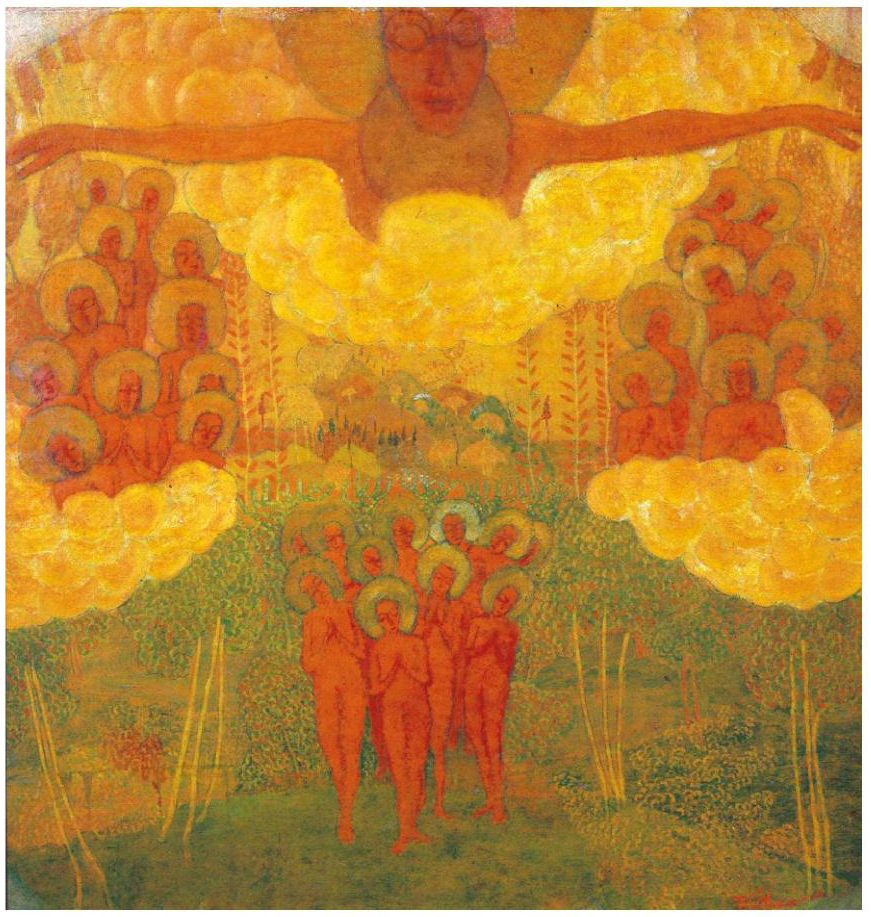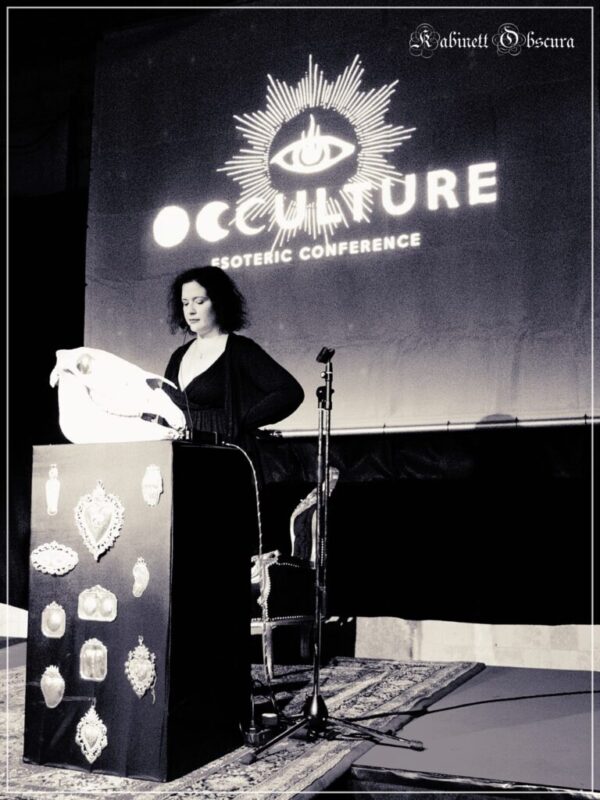Woman-as-Hetaera in the Kosmic Gnosis (Initial Musings)
This post serves as an intro to this whole website / blog since “modern hetaerism” or “becoming a pagan hetaera” shall be my guiding principle. Like a literary or musical motif, even when sharing the most profane, seemingly unrelated musings. Because when contemplating the Hetaera / Woman-as-Hetaera, I realized that I understand her to be more than a role you take on in a limited magical or ritual setting and not to be restricted to your sexual lifestyle even though both of these are central. Hetaerism as I see it is a conglomerate of values all of us should aspire to, an approach and attitude towards (erotic) love and life in general.
“Modern hetaerism” is an expression I encountered first in the writings of Franziska zu Reventlow (1871-1918), who had been regarded as the prototype of a “pagan hetaera” by her contemporaries.1Like with all things pertaining to the Kosmiker circle it was David Beth who introduced me to these writings/thoughts. I clearly hold her as an inspiration/role model for the Kosmic Gnostic (woman) and hope to introduce some of my reasoning (and her works) here and elsewhere in the future.
For now, I do not want to linger on any particular person or definition, however, but only give a quote from her early writings that triggered and illustrates my train of thought:
Perhaps there will be another women’s movement in this sense, which liberates women as sexual beings, teaches them to demand what they are entitled to demand, full sexual freedom, that is, free disposal of their bodies, which brings us back hetaerism. Please, no outcry! The hetaerae of antiquity were free, highly educated and respected women, whom nobody blamed when they gave away [verschenkten] their love and their bodies to whom they wanted and as often as they wanted, and who also participated in the spiritual, intellectual life of men.
Franziska Gräfin zu Reventlow, “Viragines oder Hetären?”, 1899 (Transl. Jessica Grote)
There is no question that hetaerae of antiquity received money or expensive gifts from their lovers and if we want to, we can reduce it to a business transaction and see the hetaera as nothing else but a better prostitute (a view that began to develop in antiquity itself already if I am not mistaken). But such a view would miss the point. I totally agree with Reventlow’s choice of the word “verschenken” (give as a gift) which gives the exchange the dignity it deserves and puts emphasis on the free choice. The hetaera chooses whom to give her body to and she treats it as a gift – and so does her lover!
A body- and sex-positive attitude is (at least in theory) proclaimed by most modern occult, pagan, witchcraft etc. groups and practitioners. Consequently, on the surface, the occult2(using this as an umbrella-term) world teems with scarlet women, empowered priestesses, sacred prostitutes and confident “glam”-witches. And yet, it often seems to me that these are roles taken on mainly (if not only) in the magical setting, or worse, the social media appearance. Also, there is frequently (still) an over-emphasis on either the body OR the intellect. Regarding the latter, there seems to be a current movement of de-sexualizing such clearly erotic figures as Babalon, Scarlet Women or Sacred Prostitutes and I think this rather disturbing. Don’t get me wrong: I do not want to limit women to a sexual function, as this post should make clear – but actualizing a self-determined, free sexuality of your own choice is not achieved by a strife towards a misunderstood independence from men. This is why we still need a modern hetaerism as it goes beyond the concepts in place so far and connects men and women in what we call symbiotic occultism in the Kosmic Gnosis (an approach of egality that does neither deny nor try to transcend sexual, biological, metaphysical differences).

The hetaera combines all aspects (body, mind, sacred, profane) without the need to assimilate men and women. She is free and self-determined in her erotic expression and sexual lifestyle without necessarily being promiscuous. She appreciates culture and education, and does not hide (nor over- or underestimate) her intellect. She revels in all kinds of beauty and celebrates the feminine (and her femaleness) just as much as she admires the masculine. She knows about the value of symbiosis and “participation” and feels no need to define herself in relation to men (as above, below, apart or what have you).
The modern pagan hetaera is not a role for specific parts of life only, e.g. something you embody in ritual, but a guiding principle for a (fe/male) Kosmic Gnostic lifestyle. If we seriously follow an initiatory, transformative path, our profane life must become more and more an expression of our occult-magical life, too. I am not saying that this is always possible or that I succeed at this all the time; certainly sometimes more, sometimes less. I am convinced of this approach and direction, however, and intend to explore and express the Woman-as-Hetaera and modern pagan hetaerism in the Kosmic Gnosis more elaborately in the future.
This is a work in progress. There will be posts relating to this topic in irregular intervals and it might result in other forms of publication as well. It is not meant as a study in classic hetaerism but I am highly interested to hear from you, if you are well informed in this area. Actually, any form of productive collaboration is welcome, just get in touch. JG
Follow Jessica Grote on WordPress.com



Hi! Enjoying your blog and writings 🙂
Hey, thank you! 🙂
I really enjoyed reading this.
This particularly struck a cord with me – “She is free and self-determined in her erotic expression and sexual lifestyle without necessarily being promiscuous.” Most of the aforementioned stylings and conceptualisations of liberation seem to emphasise the extreme end of the spectrum contrary to what is socially-dictated.
The facilitation and encouragement of sexuality and erotic expressions being dictated in a self-determined manner is welcomed, as someone who is inclined towards but not exclusively asexual(-ish). It doesn’t limit the expressions of eroticism to sex or sexual acts and it doesn’t promote any one styling of relationship.
“If we seriously follow an initiatory, transformative path, our profane life must become more and more an expression of our occult-magical life, too.” — This integration resonates deeply as the separation of such integral parts of the whole makes little sense to me. I’ve always perceived the two – and other aspects – as interwoven like a tapestry. One will impact on the other.
How I perceive the concept of symbiotic occultism as someone who is biologically female but who does not connect with the predominant Western social concept of ‘woman’ exclusively is something worth contemplating personally for me. I tend to self-style as non-binary and/or femme as words encompassing more of a spectrum that integrates the energies without being binary. Food for thought!
Thank you, very thoughtful! I think that it is important to consider concepts from what they are actually trying to convey so I’d be interested where you land on symbiotic occultism. I would see my approach and work as inclusive in the way that eventually I think that each and everyone brings something to the table particular to their experience – which is rooted in the conglomerate of elements that make us who we are – our biological reality just as much as self-identification and much more.
I’ll likely hash out my thoughts in a blog post. I find it to be the best way to organise things both in my head and in writing. Communicating within while communicating outward at the same time, in a way. Thank you for the reply!